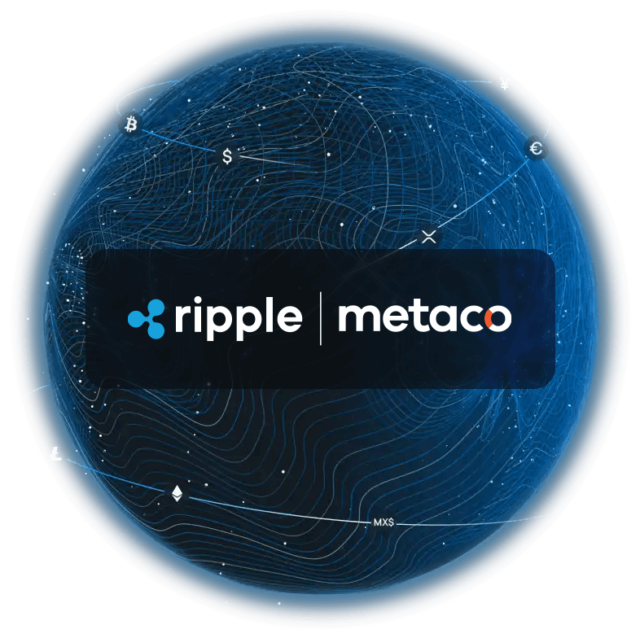An interview with Adrien Treccani, CEO and co-founder of METACO.
The announcement of Libra revealed how pressing it is for the financial industry to embrace digital assets. What will it take for banks to onboard this asset class and transition to the token economy?
First, we should point out that blockchain-based platforms were not designed to blend into our financial system but to disrupt it. As a result, integrating the assumptions, infrastructure, and architecture of digital assets into existing banking systems – which have not changed significantly over the last 20 years – presents important technical and business challenges.
On the one hand, transitioning means that the crypto and traditional banking infrastructures should talk to each other and fit together. Doing so requires a deep understanding of the crypto and the traditional banking worlds to revise assumptions (as basic as the number of decimals required in transactions), analyze systems and workflows gaps, and design a comprehensive platform that supports all duties, including compliance, reporting, etc. As of today, only financial institutions working symbiotically with tech companies have the required acumen to do this successfully.
On the other hand, banks will need to make digital assets as simple to manage as traditional assets. Usability is key but not obvious when talking crypto. Digital assets work in a unique manner: custody relies on the notion of private keys, latency can be high and transaction finality uncertain. Banks cannot afford to let employees and investors deal with those complexities. They will need to understand them and obfuscate them. This is the primary success factor of many crypto exchanges: offering investors a quasi-bank user experience.
Finally, banks are strongly regulated institutions so starting any transition in the absence of a clear legal framework will prove intimidating. Policymakers have so far taken a very reactive approach, and progress has been made only as business cases have appeared. Projects like the Libra network demonstrate this dynamic; big corporations and financial institutions taking the lead have to work on their projects in an environment of legal uncertainty. However, those are precisely the companies driving and influencing the most the definition of laws and regulations.
METACO’s digital asset management solution, SILO, is precisely designed for banks. How did these technical and business challenges influence the product development and go-to-market?
Since the start, we knew that, for SILO to be a credible solution, it had to mitigate all the technical and functional concerns of the custodians, whether we talked about banks, exchanges or infrastructure providers.
Hence, our first priority was to understand and meet our client’s needs. As a technology company in such a nascent industry, this was challenging; for SILO to be fit-for-purpose, we needed financial industry experts to advise on business requirements, expectations and pain points. This is why established partnerships with global core banking software and infrastructure providers such as Avaloq, Swisscom or Temenos. These extremely reputable firms did not only provide priceless input on the product design but also integrated it within their own product stack, confirming the product’s legitimacy.
Once the product strategy was set, our next priority was to ensure SILO offered a superior technical solution. We have put great efforts into making no compromises in our product decisions, from architecture to coding language, and sourcing strategy. As a matter of fact, we trust that in-house development is crucial, so we considered partnerships only when they were imperative to deliver the value proposition. For example, SILO relies on a unique hardware security concept that we co-developed at launch with our HSM provider, Guardtime. This partnership proved essential not only to guarantee outstanding levels of security (Guardtime’s solution is already proven by the US military), but also to make SILO the first digital asset storage solution to be insurable against crime. Since then, we have also partnered with Swiss HSM expert, Cysec and Swiss automated trading expert, AlgoTrader AG.
Regarding the go-to-market, there were two, less evident needs we sought to tackle.
On the one hand, we had to ensure our clients would feel comfortable managing digital assets. As mentioned earlier, the logic of crypto is radically different from that of traditional assets and that can cause apprehension. No bank wants to do custody over an asset and a market they do not understand, neither can afford a hit on reputation due to asset mismanagement. Our clients must understand what those assets are, how they work, which risks and opportunities they involve and how to manage them. Hence, we make great efforts into educating audiences at events, through webinars, papers, as part of our product training, or even through product demos and at RFPs.
Finally, there is the regulatory aspects. This point is definitely not in our hands, but try to be as close as possible to those defining or contributing to frameworks (such as FINMA in Switzerland, insurers, bodies like GDF and legal firms). This helps us be aware of the latest developments, contribute where relevant and keep our clients informed.
So, it seems partnerships have been central to your product strategy?
Absolutely. There is no other way to do it. Tokenization will be the next economic revolution and the underlying infrastructure must be bullet-proof. In an era of specialization, the most effective and reliable approach to bridge the traditional and crypto economy is to create ecosystems where fintechs and incumbents create best-in-class solutions that ease the transition by respecting legacy systems and allowing for a seamless management of traditional and digital assets.
How do assess potential partners?
Building a partnership means working closely, almost symbiotically, with another company. These sort of relationships can be as powerful as damaging for your business, so it is crucial to assess them thoroughly and strategically.
At METACO, we join forces with companies who aim to achieve something exceptional and share our vision, goals and work ethic. They must be remarkable in their specific fields of work. There is nothing more reassuring about the competence and drive of a partner than proven business success.
Also, partnerships must be a win-win for all the parties involved. That is what drives engagement and makes them sustainable. When not the case, a partnership is simply not worthwhile. It becomes a cost of opportunity and takes energy on both sides.
What is your outlook for the industry in the 2020?
More and stronger ecosystems.
More financial institutions announcing digital assets management services.
Clearer regulatory and legal frameworks.





